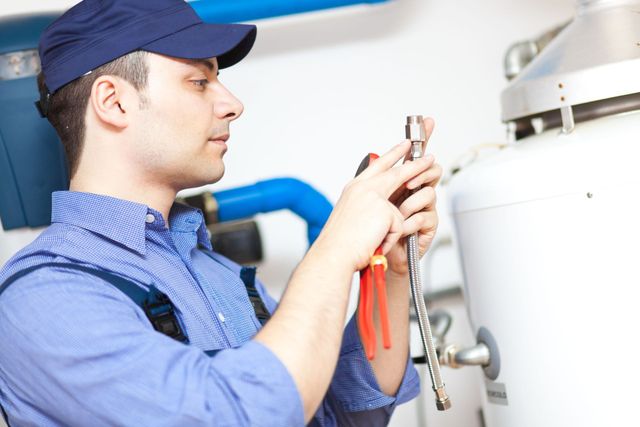Listed here below you can locate additional good quality insight with regards to Tips For Maintaining Your Hot Water Heater.

Warm water is crucial for daily convenience, whether it's for a refreshing shower or washing dishes. To guarantee your warm water system runs effectively and lasts longer, regular upkeep is crucial. This short article provides sensible ideas and insights on how to keep your home's hot water system to avoid interruptions and costly repairs.
Intro
Maintaining your home's hot water system could appear challenging, yet with a couple of easy steps, you can guarantee it operates smoothly for several years to find. This guide covers every little thing from understanding your warm water system to do it yourself maintenance tips and understanding when to call specialist help.
Value of Preserving Your Warm Water System
Regular maintenance not just extends the life-span of your warm water system but also ensures it runs effectively. Neglecting maintenance can lead to decreased performance, higher power costs, and also early failing of the system.
Indicators Your Warm Water System Demands Upkeep
Understanding when your warm water system needs attention can protect against significant concerns. Look out for signs such as inconsistent water temperature, strange sounds from the heater, or rustic water.
Comprehending Your Warm Water System
Prior to diving into maintenance jobs, it's handy to recognize the basic parts of your hot water system. Normally, this consists of the water heater itself, pipelines, anode poles, and temperature controls.
Regular Monthly Upkeep Tasks
Regular month-to-month checks can assist catch small issues prior to they escalate.
Purging the Water Heater
Flushing your hot water heater eliminates sediment buildup, boosting effectiveness and extending its life.
Checking and Changing Anode Rods
Anode poles stop corrosion inside the tank. Evaluating and replacing them when worn out is important.
Inspecting and Readjusting Temperature Level Settings
Adjusting the temperature level setups makes sure ideal performance and safety.
DIY Tips for Upkeep
You can execute a number of maintenance tasks yourself to maintain your warm water system in top condition.
Looking for Leaks
Consistently inspect pipelines and links for leaks, as these can result in water damage and greater expenses.
Testing Pressure Relief Valves
Checking the pressure safety valve ensures it works correctly and avoids excessive pressure buildup.
Shielding Pipelines
Shielding warm water pipes decreases heat loss and can save power.
When to Call a Specialist
While do it yourself upkeep is helpful, some problems need professional proficiency.
Facility Problems Needing Professional Help
Instances consist of major leaks, electric issues, or if your water heater is consistently underperforming.
Regular Specialist Maintenance Benefits
Specialist upkeep can include detailed assessments, tune-ups, and guaranteeing conformity with security standards.
Verdict
Normal maintenance of your home's warm water system is necessary for effectiveness, longevity, and price savings. By complying with these tips and understanding when to look for professional assistance, you can make certain a dependable supply of hot water without unanticipated disturbances.
Water Heater Maintenance Tips
Test the TPR Valve
Shut off the power and the cold-water supply valve. Place a bucket under the pipe connected to the temperature-pressure-release (TPR) valve on the top or side of the tank. (This valve opens if the tank pressure gets too high.) Lift the valve’s tab to let some water out, then let go. If water keeps flowing, drain the tank partway, unscrew the old valve with a pipe wrench, and install a new one. Check the Anode Rod
Put a hose to the tank’s drain cock and let out a few gallons of water. Now fit a 1 1/16-inch socket onto the rod’s hex head on top of the heater (or under its top plate) and unscrew the rod. If it’s less than ½ inch thick or coated with calcium, buy a new one, wrap its threads with Teflon tape, put it back in the tank, and tighten securely. Use this segmented rod if headroom above the tank is limited. Drain the Tank and Wash Out Sediment
Drain the remaining water in the tank into the bucket, then stir up the sediment on the tank’s bottom by briefly opening the cold-water supply valve. Drain and repeat until clean water comes out of the hose. Close the drain cock, refill the tank, and turn its power back on. Adjust the Temperature
Find the temperature dial on the side of the tank and unscrew its cover. Adjust the dial to 120 degrees using a flathead screwdriver. For every 10 degrees the temperature is lowered, you can expect to save up to 5 percent in energy costs. Turn the water heater off or the thermostat down to its lowest setting if you plan to be away from home for more than three days. Insulate the Pipes
Buy some self-sticking 3/8-inch-thick foam pipe insulation that matches the pipes’ diameter. Slide the foam over the hot-and cold-water pipes as far as you can reach. Insulating the cold-water pipe prevents condensation in summer. Peel the tape and squeeze the insulation closed. If the pipe is 6 inches or less from the flue, cover it with 1-inch-thick unfaced fiberglass pipe wrap. https://www.thisoldhouse.com/plumbing/21016402/how-to-maintain-a-water-heater

I recently found that piece of writing about How to Maintain Your Water Heater & Prolong its Life while doing a lookup on the internet. Do you know about somebody who is very much interested in the topic? Please feel free to promote it. Thanks so much for your time invested reading it.
Set An Appointment